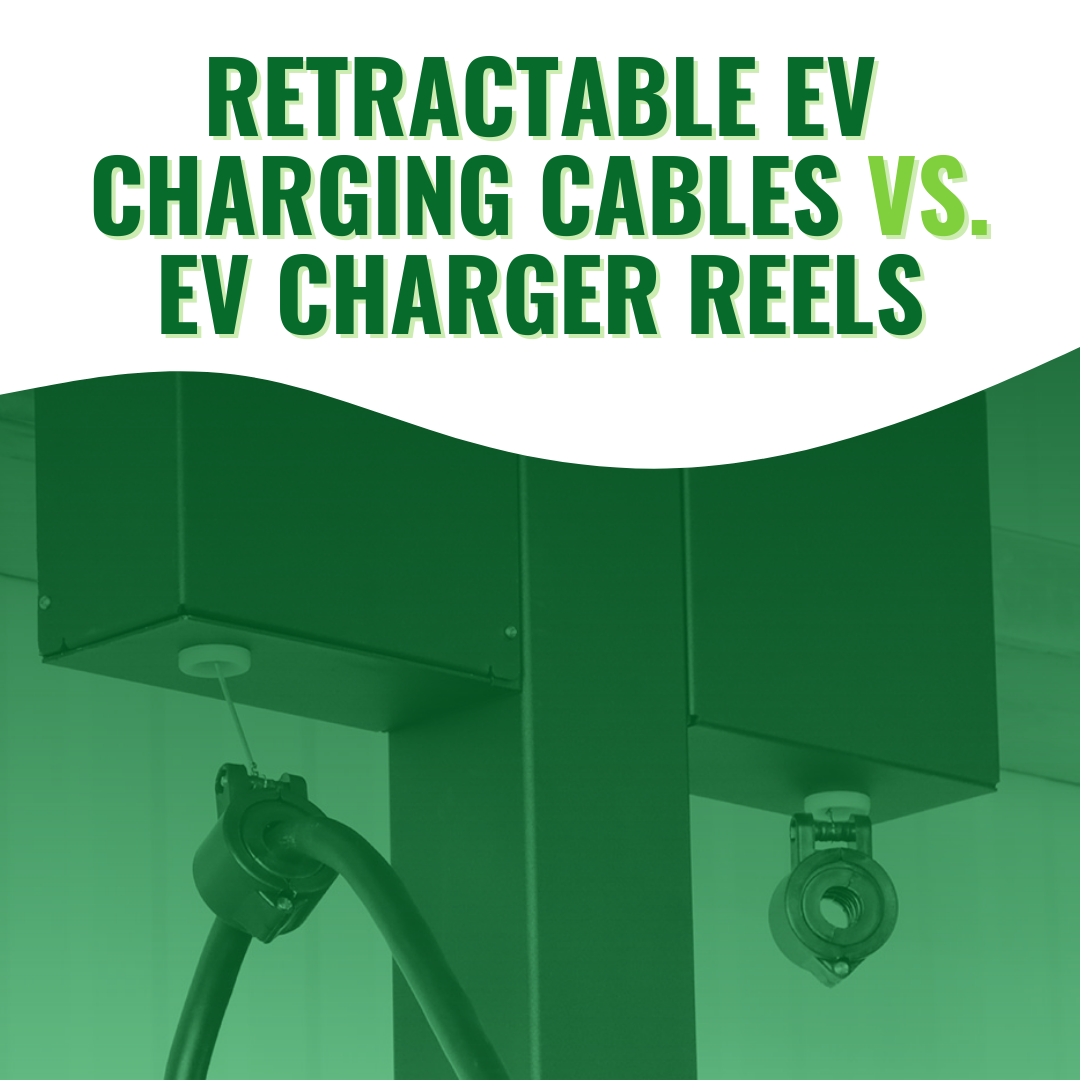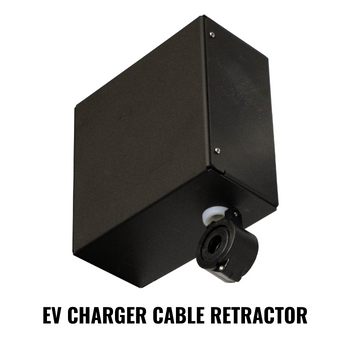We use cookies to make your experience better. To comply with the new e-Privacy directive, we need to ask for your consent to set the cookies. Learn more.
Retractable EV Charging Cables Vs. EV Charger Reels
No electric vehicle (EV) charging station is complete without a cable management system. These accessories keep cables off the ground, so cars don’t run — and people don’t trip — over them. Cable management tools also make it more convenient to plug in vehicles: No hand-coiling or uncoiling necessary.

From a compliance perspective, the National Electrical Code (NEC) requires cable management tools for longer charging cables. According to Article 625 of the NEC (specifically, Part II, section 625.17 [C]), cables can’t exceed 25 feet (7.5 meters) without a cable handling mechanism of some sort.
But what kind? Home charging stations often make do with a hook and plug holder, relying on users to carefully coil the cable between uses. That’s a gamble at public charging stations. It’s an imposition on workers for commercial fleet charging systems. It also adds an extra step to every charge, as users have to unwind the cable before they can use it.
Luckily, more convenient cable management tools are available. Two designs dominate the current market: retractable EV charging cable systems and EV charger reels. While these may both sound like the same thing, there are important differences that make charger reels the better choice for most commercial and public EV charging stations.
In this post, we’ll define retractable EV charging cables and EV charging cable reels. We’ll compare the two options. Finally, we’ll explain the advantages of cable reels over other approaches to EV cable management.
Defining Retractable EV Charging Cables and Cable Reels
Before we get into a comparison, here’s what we mean when we discuss these two types of cable management equipment:
A retractable EV charging cable basically works like a fishing reel, except instead of having to manually rewind the line, a spring-loaded mechanism does it for you. The charging cable winds around an auto-retracting reel that attaches to a wall or charger stand.
This design keeps cables neatly wound up between uses. It makes it easy to tug the cable into place when it’s time for a charge. If you’re installing a retractable EV charging cable reel system outdoors, be sure to look for the NEMA 4 rating. That’s the National Electrical Manufacturers Association’s designation for electrical enclosures that are sufficiently weatherproof for outdoor use.
An EV charger reel is a shorthand term for a charging cable retractor. Rather than wind the cable itself around a hub, these cable management solutions lift cables out of harm’s way with a self-retracting wire. These wires terminate in a cable clamp that matches the charging cable’s diameter.
Buy EV Charger Cable Retractors from Solus Group.
So what makes these designs different from one another?
Comparing EV Charger Cable Management Solutions
To understand the difference, let’s return to the metaphor of the fishing reel. In a retractable EV charging cable, the cable itself is the line. There is no fish. In an EV charger reel, retractable braided steel wire is the line and the charging cable is the fish, i.e., the thing that the line pulls.
That distinction matters. Retractable EV charging cables put more stress on conductors. They constantly coil and uncoil your charging cable. That causes torsional (or twisting) stress. To dispense the cable, users must tug on the cable itself. That applies tensile (or pulling) stress.
Of course, retractable EV charging cables should be rated to withstand this repeated force. But what happens when overzealous users pull on a cable with all their might? They could exceed the cable’s specified load strength and cause damage. That’s a particularly worthwhile consideration in public charging stations.
With an EV charger reel, there’s less repeated torsional and tensile stress. The reel line takes some of the force, leaving less for the cable itself. There’s less need to subject cables to the twisting associated with coiling and uncoiling. In short, EV charger reels are a gentler way to manage cables in EV charging stations.
As an added bonus, EV Charger Cable Retractors tend to be more affordable than the retractable cables currently on the market. Retractable cables may indeed be ideal for home charging stations, where the same person owns both the car and the charging station. For commercial fleet charging and public stations, however, we’d recommend the gentler control of an EV Charger Cable Retractor.
Looking for cable management solutions for your EV charging stations? Contact Solus Group to discuss our selection of EV Charger Cable Retractors.

